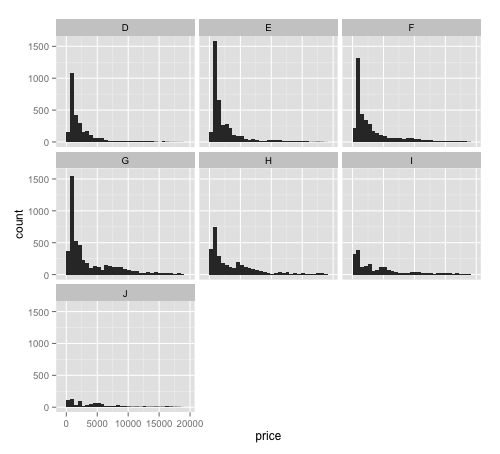

However A) it changes the row-wise type of the column and B) I would like to specifically know why c() does not work: df |>

You could do something like the following code. Returns an ungrouped data frame and adjust accordingly.Ĭall `lifecycle::last_lifecycle_warnings()` to see where this warning was generated. I When switching from `summarise()` to `reframe()`, remember that `reframe()` always Returning more (or less) than 1 row per `summarise()` group was deprecated in dplyr 1.1.0.
#Dplyr summarize issues with list code
This should result in one row per group, but it does not (note the code was written using dplyr >= 1.1.0): library(dplyr) replacement.I have a list-column and I would like to use c() for each group to combine these lists in summarize. I want to customize x-axis labels on a bar-chart. However, in trying to specify new values, they either disappear or get completely shifted to the right.

You want the option ybar instead of smooth in the \addplot line.
#Dplyr summarize issues with list how to
You can change this behaviour in this way: plot (1:100, cumsum (rnorm (100)), type="l", axes=FALSE) # Do not plot any axes axis (3) # Draw the x-axis above the plot area axis (4) # Draw the y-axis to the That's a good question (you should maybe ask it as a proper question to get more visibility) to which i'm not sure how to answer. I would like to rotate them to 35° or 45°, so they are not cut off anymore. x=element_text (angle=90,hjust=1,vjust=0. import pandas as pd import numpy as np import matplotlib. set_xticklabels() Regarding the rotation, the last two methods allow you to pass a rotation argument along with the labels. By default, the categorical axis line is suppressed. If there is a better way to write the label then suggestions are very welcome. But that seems like more work than plotting a layer of new symbols over the old symbols. " Because we haven't specified the at argument in the boxplot call, the default "1:n positions 1 Answer. arg parameter inside the call to barplot. To know which car … The barplot() function allows to build a barplot in base R. To center the labels in the middle of the bar, use 'center'. Similar to this answer, the easiest solution follows. Once the axes have the correct type, there are additional matplotlib methods, which can … Here's a solution with ggplot. If TRUE, a vertical (or horizontal, if horiz is true) axis is drawn. Note that the at argument sets where to show the tick marks. Use the aggregate ( ) function and pass the results to the barplot ( ) function. With many bars, bar labels may start to overlap. I am attempting to create a bargraph in r, and I am having trouble with the x axis labels being cut off. Figure 23 The result is shown in Figure 24. Similarly, for the y-axis: How to remove or hide y-axis ticklabels Ploting axes on the right and top sides of a plot. There are a few things you can do to reduce the overlapping of labels, including their number, their font size, and their rotation. ) When in doubt about a plotting argument, change/omit it and look at … I am using a dataset to create a horizontal in the horizontal orientation. Just as a test, I tried plotting only the top 5 states using: R Bar plot x axis plotting help, x axis not matching data.

You can set the font size using cex, but using a value of 1 actually sets the font to 1. Each group (x axis, 1:10) should have 2 bars next to each other, one for var. This section also include stacked barplot and grouped barplot where two levels of grouping are shown. Your code with smaller parameters plots everything fine: How to Position the Percentage Labels Inside the Bars. If you could respond with a graphic (although the question was asked back months) with the above parameters, to see if my proposal is … X-Axis Labels on a 45-Degree Angle using R. Thus, I seek R to increase the font … The code above creates a plot perpendicular to axis labels. To add labels to the x and y axes we use the corresponding ylab = and xlab = arguments in the bold italics) other argument include font. You can decrease the font size using matching font size for data labels to font size of other elements in ggplot geom_bar 3 barplot in r : increase argument font size without arguments gone missing, and plot the values near bar R Programming Server Side Programming Programming. axisnames Perhaps you could use layout to create independent axis labels and position them close to the original graph with no axis labels. The bars are positioned at x with the … The barplot() function.


 0 kommentar(er)
0 kommentar(er)
